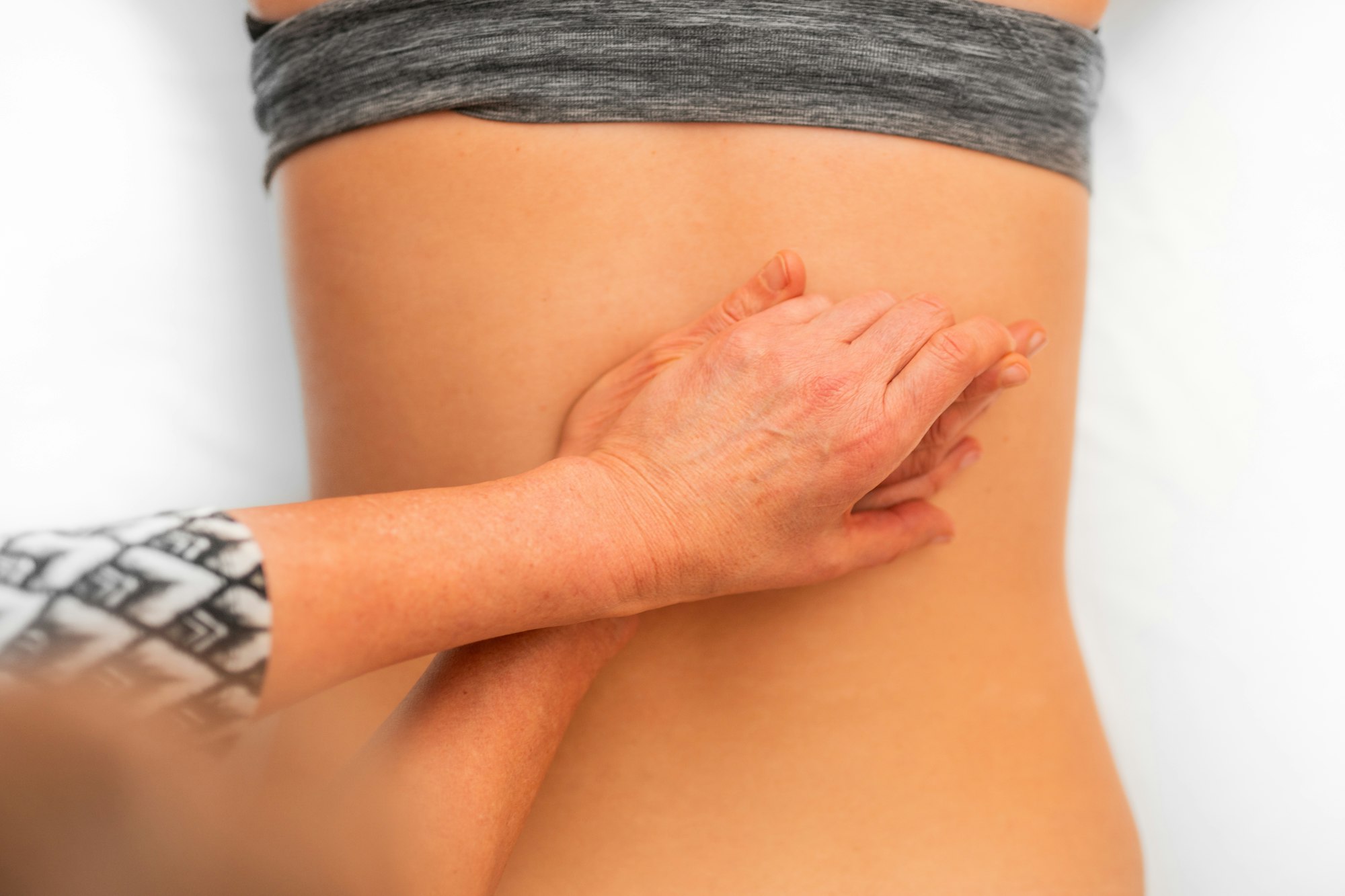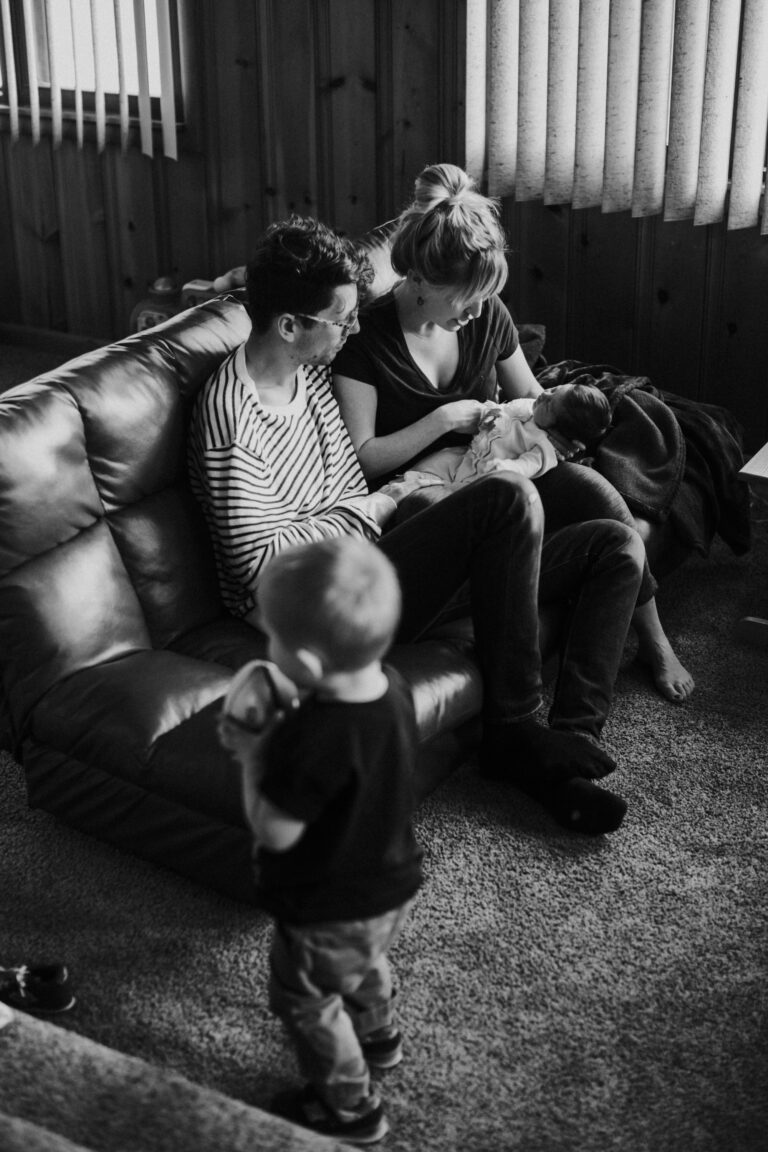The postpartum period, with its whirlwind of changes, exhaustion, and deep joy, often brings unexpected challenges. How do you relieve the simmering lower back ache that refuses to disappear? Is there help for the pelvic heaviness or those aches that creep into your shoulders from hours of feeding and holding your baby? Parents navigating this sensitive phase commonly seek compassionate solutions—approaches that do more than offer surface-level relief and instead build real, lasting comfort. Postnatal osteopathy proposes such a path: a gentle, hands-on therapy prioritizing physical and emotional recovery, tailored uniquely for new mothers’ needs. Unpacking what happens inside your body after pregnancy, revealing how subtle postural shifts or scar tissue might disrupt daily life, and outlining how osteopathy can help—every section explores both medical understanding and practical strategies for recovery. Expect guidance that respects both ambition and vulnerability, illuminating the ways science-driven, gentle interventions can support autonomy, comfort, and the harmonious relationship between parent and child.
Understanding Postnatal Osteopathy and Its Benefits
Postnatal osteopathy stands at a remarkable crossroads: tradition meets evidence-based healing, all directed towards supporting mothers emerging from the intense physiological and emotional transformation of birth. This therapy operates far beyond superficial muscle rubs; imagine instead hands that read the patterns of tension in your body, precisely releasing restrictions and inviting the nervous system to recalibrate. By focusing on realignment, soft tissue release, and improved circulation, osteopaths help restore musculoskeletal balance—a foundation for everything from better posture to reduced pain.
What makes postnatal osteopathy distinctive? The approach is holistic, blending detailed knowledge of the musculoskeletal system, soft tissue mobilisation, spinal alignment, and cranial therapy. Targeted yet gentle, these interventions prioritize your body’s rhythms—your unique architecture shaped by pregnancy, delivery, and early parenthood. Mothers frequently report that, after sessions, not only does the discomfort fade, but their sense of self returns. The therapy’s adaptability is its strength: pelvic floor weakness, abdominal muscle separation, lingering scars—each receives specialized, attentive care.
Muscles, ligaments, joints, and even hormonal patterns change dramatically throughout pregnancy and the postnatal window. Modern fatigue—sitting too much, fast-paced routines, and lifting awkwardly—often compounds this natural adaptation, reducing tissue flexibility or causing compensatory patterns. If restrictions were present before pregnancy, they may now surface as persistent pain or discomfort. Postnatal osteopathy isn’t just about chasing pain away; it actively rewires the relationship between your body’s structural framework and functional ease.
How does osteopathy compare to physiotherapy or chiropractic care? Osteopathic treatment brings a broad, system-wide focus, with soft, non-invasive methods targeting not only the spine but also the pelvic floor and internal organs. In contrast, physiotherapists typically prescribe targeted exercises for muscle function and rehabilitation, while chiropractors emphasize spinal manipulation. For mothers seeking low-force, restorative care specifically with the postpartum body in mind, postnatal osteopathy offers an integrative, individualized option.
The Effects of Pregnancy and Childbirth on the Body
Pregnancy stretches the imagination, and so much else—the abdominal wall, the pelvic connections, even the respiratory machinery. Hormonal surges, particularly relaxin, loosen ligaments, preparing the pelvis for birth, but after delivery, that instability may not resolve immediately. Standing, sitting, feeding the baby—all now feel different, often awkward, sometimes uncomfortable.
Two anatomical hubs deserve particular attention: the diaphragm and the pelvic floor. Their synchrony is not widely discussed, yet it determines much of your comfort. The diaphragm, nestled between your chest and belly, must adapt its movement so you can keep breathing easily as your organs readjust. Meanwhile, the pelvic floor—that hammock of muscles spanning the base of your pelvis—carries the weight of daily function, from bladder control to postural support. When either becomes restricted or struggles to cooperate with its partner, pain and dysfunction often result: persistent backaches, pelvic discomfort, or a nagging sense of instability.
Musculoskeletal discomfort is not merely a byproduct—it is a signal. Tight hamstrings after pacing with a crying newborn? Aching shoulders from endless feeding sessions? These aren’t simply inevitable—they are areas where manual therapy can help alleviate compensations and restore ease. Postnatal osteopathy identifies these subtle imbalances and helps unwind the tension, providing relief and restoring natural mobility.
Addressing Common Postnatal Issues with Osteopathy
Postnatal osteopathy directly targets the issues new parents know all too well. Lower back and pelvic pain? For most, this is more than a nuisance—fluctuating between dull and sharp, often amplified by sleep deprivation. Gentle soft tissue work and joint mobilization relieve tension, improve alignment, and help create the conditions for sustainable recovery.
Another area seldom discussed openly but frequently encountered: pelvic floor dysfunction—urinary incontinence, heaviness, or the sensation of prolapse. These can emerge quietly or suddenly, leaving uncertainty in their wake. Postnatal osteopathy incorporates specialized pelvic alignment support and helps encourage the natural healing of the pelvic floor through targeted, non-invasive interventions. With diastasis recti (abdominal separation), a widespread concern, treatment focuses on reducing tension across the abdominal wall and restoring core integrity, slowly giving back strength and confidence.
What about those who have experienced cesarean or episiotomy? Scar tissue may create pockets of tension, restricting movement and creating lingering aches. A skilled osteopath approaches these areas with profound care, gently working around (never on) healing scars to mobilize tissues and assist pain relief.
The reality of baby care—endless lifting, holding, and feeding—commonly introduces shoulder, neck, and wrist pains. De Quervain’s tenosynovitis (painful wrist) arises not infrequently. Osteopathic techniques offer targeted relief for these repetitive strain issues, supporting mothers in regaining comfort for the daily routines that matter most.
Headaches, fatigue, and emotional stress tend to overlap in the postnatal period. Manual therapy directed at the upper back, head, and neck can relieve chronic tension, sometimes improving sleep and mood as a result. Commonly, mothers report deeper relaxation and a renewed sense of balance after a session.
Not to be forgotten, newborns too can benefit from gentle osteopathic attention. Feeding difficulties, unsettled sleep, or discomfort following a long or instrumental birth may point to residual tension. Paediatric osteopathy—exquisitely gentle and safe—can help address these early life challenges, potentially easing latch problems or postural discomfort.
Enhancing Postpartum Recovery: How Osteopathy Works
Manual techniques form the beating heart of postnatal osteopathy—a set of hands reading your history, guiding tissue and joint recovery with careful sensitivity. Techniques include soft tissue massage (to release tension and encourage blood flow), joint mobilization (improving flexibility), and cranial techniques (subtle adjustments at the skull to influence the nervous system). What connects them all is gentleness—recognizing the vulnerability and resilience of the postpartum body.
Correcting misalignments can mean the difference between persistent ache and enduring relief. When the hips or spine drift from their ideal, consequences ripple out—think swollen ankles, stubborn stitches, or a dragging fatigue. Improved circulation aids healing, reduces swelling, and restores vibrancy.
A focus on the pelvic floor and core rehabilitation is indispensable. Gentle, controlled exercises and releases allow these deep muscle groups to reawaken strength, improving continence, stability, and readiness for gradual resumption of fitness routines.
As hormonal tides ebb and flow—sometimes unpredictably—osteopathy supports nervous system balance, moderating symptoms like anxiety, hot flashes, or mood swings. By relieving physical restrictions, the therapy creates space for calmer mind-body functioning, indirectly influencing sleep patterns and emotional steadiness.
Optimizing Mother-Baby Bonding and Daily Comfort
Pain impedes bonding; comfort fosters connection. When physical relief arrives—whether by easing breastfeeding pain or draining shoulder tension—the intricate dance of daily care becomes more joyful, and emotional availability grows. Osteopathic support for mothers facing discomfort with feeding positions often unlocks new strategies, from improved ergonomics to posture education, meaning each feed becomes a little more sustainable.
For babies struggling with latch or suck-swallow coordination, even minor jaw or neck restrictions may be the culprit. Pediatric osteopathy employs delicate touch, nudging tissues into optimal alignment, sometimes transforming the feeding experience for both mother and infant.
Reducing maternal stress by releasing stored tension does not just uplift mood—it also smooths the path for secure attachment, laying the foundation for strong family relationships.
When to Seek an Osteopath: Safety and Teamwork
The timing of postnatal osteopathy is flexible—some parents seek preventive support weeks after birth, others only when discomfort interrupts daily routines. After events such as prolonged labor, cesarean delivery, or significant perineal repair, early therapy can smooth recovery, though coordination with your regular healthcare provider is always wise. If you encounter severe pain, signs of infection, or symptoms worsening, make sure to consult your medical team without delay.
Safety sits at the core of every session. Choose an osteopath with specific training and experience in postpartum care—someone who reads not just muscles and joints but the lived realities of new families. Comprehensive postnatal check-ups—including input from physiotherapists, midwives, mental health professionals, and lactation consultants—offer the richest, most stable environment for parenting.
What to Expect from a Postnatal Osteopathy Session
Assessment begins not with the exam table, but with attentive listening: birth stories, previous health, current discomforts are all pieces of a complex puzzle. Subtle mobility testing, clear explanation, and session plans tailored to your body’s stage of healing characterize this approach.
Interventions remain soft, respectful, and safe; the most sensitive areas, such as healing scars or fragile tissues, are worked around with carefully tailored methods. Mothers are generally positioned comfortably, with pillows and supports adjusted, and only relevant techniques applied.
Sessions typically last between 30–45 minutes; follow-ups are suggested on a case-by-case basis. Concrete, practical advice rounds out the session—whether ergonomic feeding tips, lifting strategies, or home exercises to sustain progress.
When working with scar tissue, the osteopath employs minimalist, thoughtful movements—mobilizing the tissue’s surroundings to support healing and reduce discomfort, all without risking delicate new tissue.
Choosing the Right Osteopath for Postnatal Care
Training matters—opt for practitioners with recognized expertise in women’s health and postnatal osteopathy. Examine educational backgrounds, continuing professional development, and real-world experience supporting postpartum mothers.
Professionalism is non-negotiable. Look for compassionate listeners with flexible approaches, who blend theoretical rigor with gentle hands and emotional intelligence. The best practitioners adjust each session as your recovery unfolds—offering empathy, not formulaic scripts.
Collaboration grows ever more central. Many midwives, gynecologists, and doctors now maintain strong working relationships with osteopaths. If you’re uncertain where to start, asking your regular maternity providers for recommendations often streamlines your search.
Integrating Osteopathy into Postpartum Self-Care
Beyond manual therapy, postnatal osteopathy equips you with safe, gradual ways to resume physical activity. Guidance emphasizes gentle pelvic floor and core exercises—avoiding high-impact movement at first, building internal stability that supports a confident return to daily life or sporting ambitions.
Posture, often overlooked, is revisited and refined. Practitioners share strategies for comfortable feeding, safe lifting, and alternating sides when holding your baby, aiming to protect both spine and pelvis. Small details—using a footstool, securing back support, switching arms frequently—accumulate to reduce everyday strain.
Nutrition and relaxation walk hand in hand with physical healing. While osteopaths address tissue restrictions, they might also encourage connecting with a qualified dietitian or adopting simple breathing practices to reduce stress. The interplay between stress, hormonal shifts, and physical discomfort cannot be ignored.
Postnatal osteopathy fits seamlessly within a team-based approach: physiotherapy for rehabilitation, massage for relaxation, mental health support for emotional adjustment, lactation consultants for feeding guidance. Recovery shines brightest when support is both comprehensive and individualized.
Evidence and Ongoing Progress in Postnatal Osteopathy
Early research and clinical experiences agree: postnatal osteopathy consistently helps relieve pain, support musculoskeletal adaptation, and improve overall postpartum recovery. Parents often remark on improvements not just in pain, but also posture, movement, and the ability to care for their baby—a testament to its value even as broader scientific studies continue to develop.
The field itself is evolving dynamically, with innovations such as individualized functional assessments, richer integration with exercise therapy, and collaborative care models gaining recognition. Holistic, patient-centered therapies are increasingly favored, reflecting the desire for sustainable, comprehensive well-being.
Mothers who try postnatal osteopathy commonly notice faster resolution of longstanding discomfort, renewed energy, and a stronger connection with their baby—results echoed both in patient anecdotes and preliminary evidence.
Key Takeaways
- Postnatal osteopathy offers a gentle, systematic approach for relieving pain and fostering healing after birth, prioritizing musculoskeletal balance and emotional well-being.
- By addressing common postpartum issues—pelvic floor dysfunction, lower back pain, scar tissue, and feeding-related discomfort—this therapy paves the way for real, meaningful comfort and recovery.
- Practical, science-informed interventions (from core rehabilitation to posture strategies) support sustainable parenting, bonding, and enjoyment of early family life.
- Safety depends on selecting well-trained practitioners with clear expertise in women’s health and a collaborative spirit.
- While evidence continues to build, countless parents find significant improvements in daily comfort and function after osteopathic sessions.
- Many resources and professionals are available to support every step of your recovery journey—explore services, ask questions, and seek out collaborative care.
- For personalized guidance and free child health questionnaires, consider downloading the Heloa app to connect with further support tailored to your family’s unique needs.
Questions Parents Ask
How soon after childbirth can you start postnatal osteopathy?
Every individual recovers at their own pace, so there’s no universal timeline. Many parents begin osteopathic sessions a few weeks after birth, while others attend later, depending on how they feel and any medical recommendations. The important thing is to listen to your body and seek the advice of your healthcare provider, especially in cases of cesarean or complicated deliveries. Postnatal osteopathy is designed to adapt to various recovery stages, offering support when you’re physically and emotionally ready.
Is postnatal osteopathy safe while breastfeeding?
Absolutely—postnatal osteopathic care uses gentle, non-invasive techniques that are safe during breastfeeding. Practitioners are mindful of your comfort and understand the physical demands of feeding, often suggesting positions or strategies to ease strain. If you have any specific concerns, do not hesitate to share them; the approach can be personalized to your needs and supports both your recovery and your ability to care for your baby.
How do I find a qualified postnatal osteopath?
Choosing an osteopath with experience in women’s health and postnatal care is essential. Look for professionals who display official qualifications, are members of recognized professional bodies, and have good reviews or recommendations, ideally from your healthcare team or local parenting communities. Compassion, attentive listening, and adaptability to your recovery are key qualities. If in doubt, requesting guidance from your midwife, GP, or friends who have gone through the postpartum journey can be helpful.









